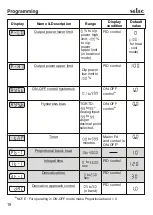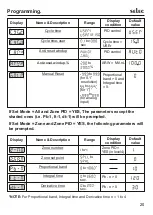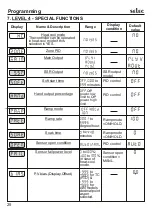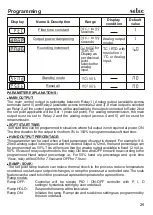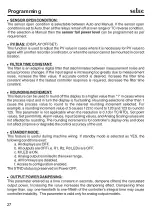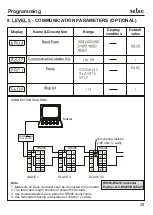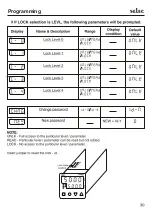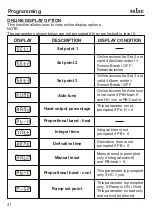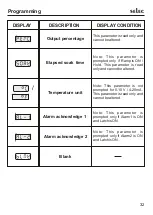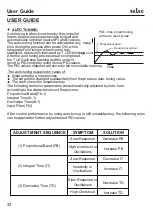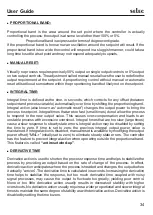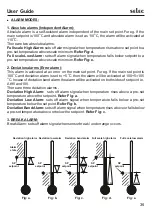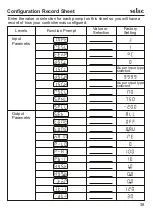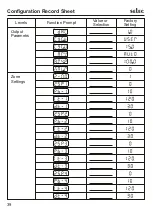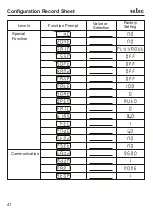
ADJUST MENT SEQUENCE
SYMPTOM
SOLUTION
Slow Response
Decrease PB
(1) Proportional Band (PB)
High overshoot or
Oscillations
Increase PB
Slow Response
Decrease IT
(2) Integral Time (IT)
Instability or
Oscillations
Increase IT
Slow Response or
Oscillations
Decrease TD
(3) Derivative Time (TD)
High Overshoot
Increase TD
33
USER GUIDE
Auto tuning is a function whereby the controller
learns the process characteristics by itself and
automatically sets the required P,I and D values.
The auto-tuning function can be activated at any
time during the process after power ON , while
temperature is rising or when control has
n
AUTO TUNING:
stabilized. Autotune is indicated by T LED blinking
After the auto tuning procedures are completed,
the T LED will stop flashing and the unit will
revert to PID control by using its new PID values.
The PID values obtained are stored in the nonvolatile memory.
The auto-tuning is applied in cases of:
Derivative Time (dt-1)
Input Filter (FtC)
according to the characteristics of the process:
If the control performance by using auto-tuning is still unsatisfactory, the following rules
can be applied for further adjustment of PID values:
=
The control result in unsatisfactory.
The following controller parameters are automatically adjusted by Auto- tune
=
The set point is changed substanitally from the previous auto-tuning value.
Integral Time (It-1)
=
Initial setup for a new process
Proportional Band (Pb-1)
set point
Temp.
Proportional band
PID - time proportioning
with auto reset & rate
Reduced overshoot
Time
User Guide

